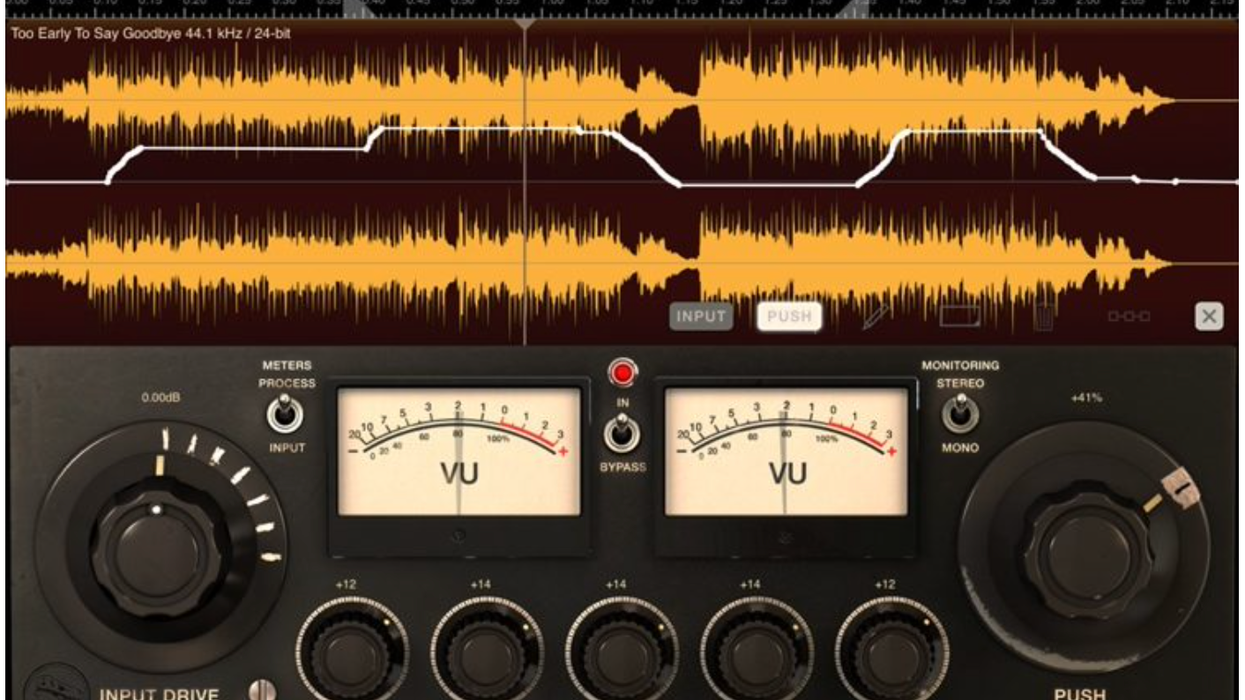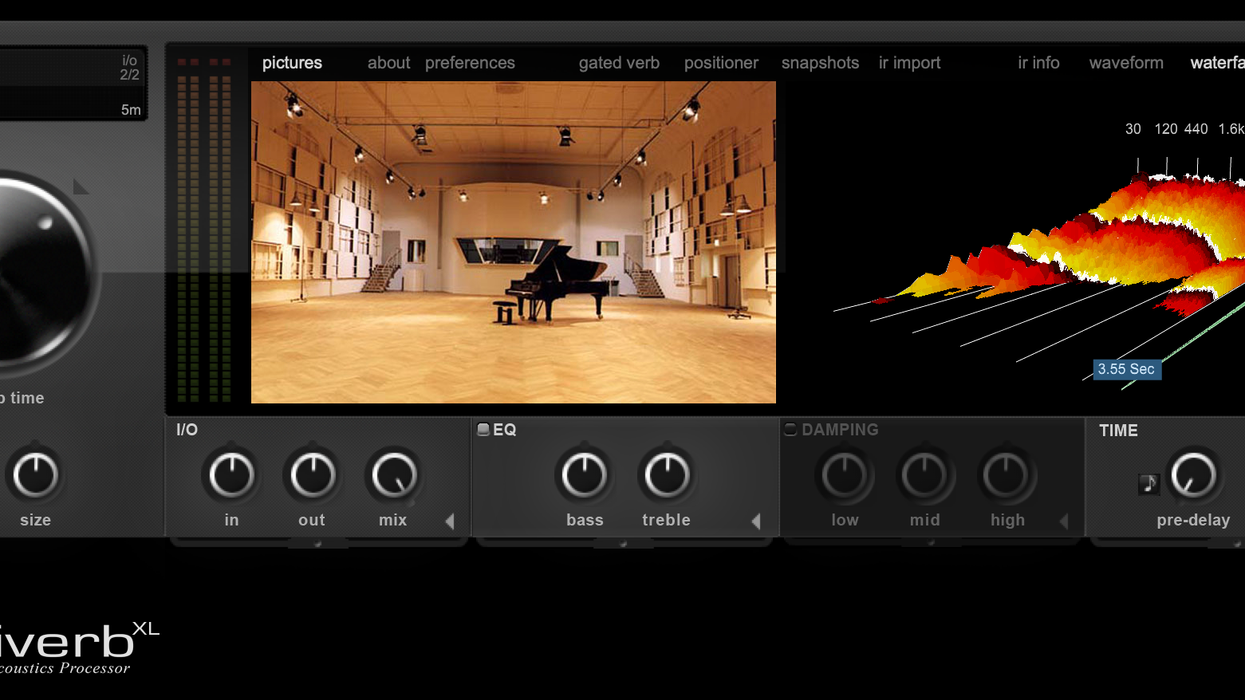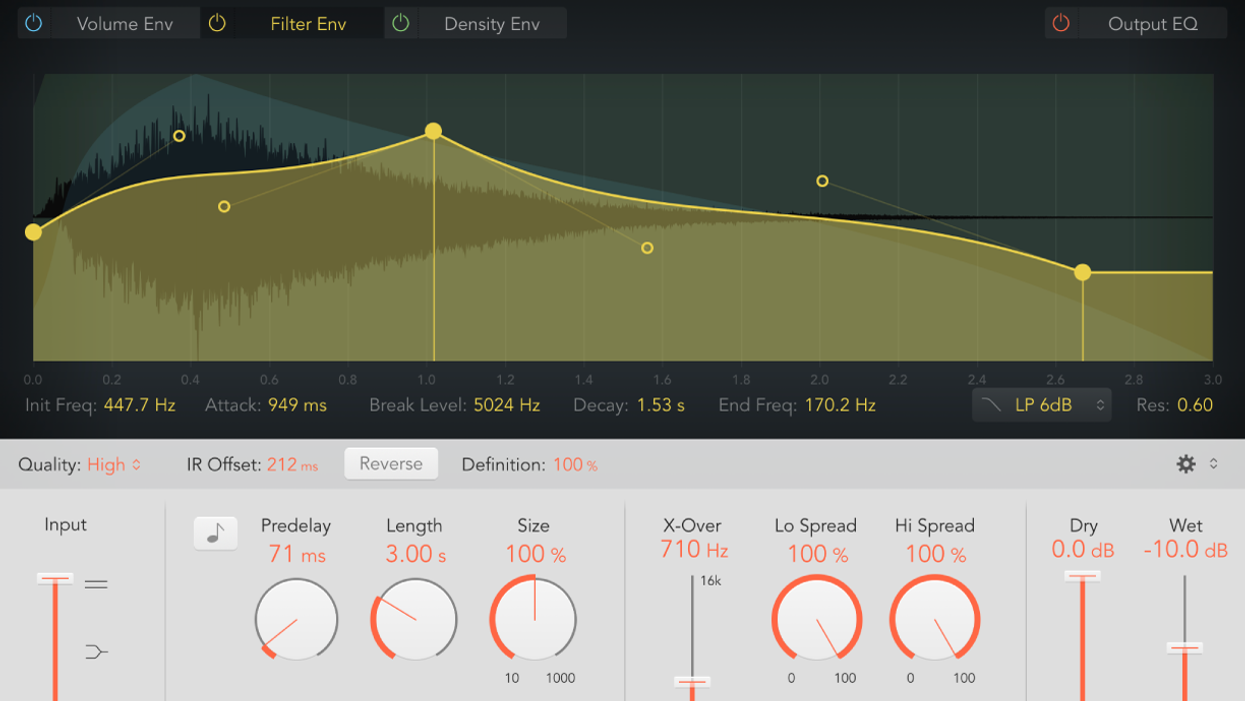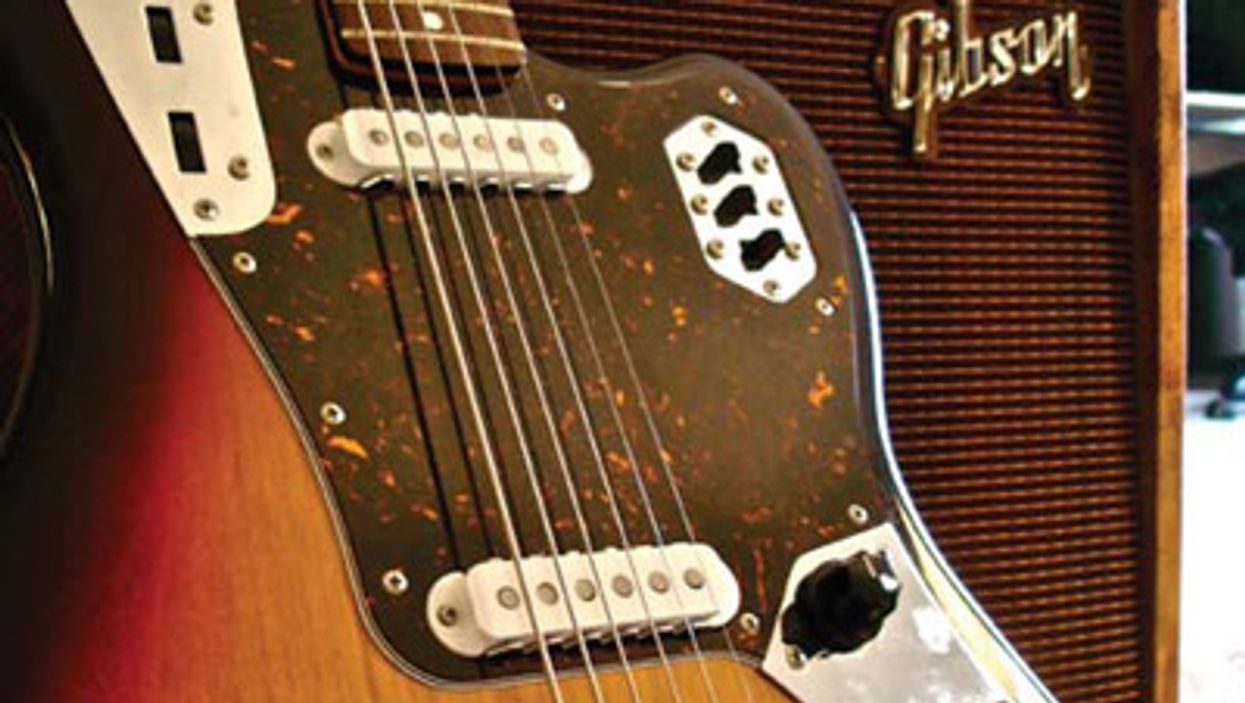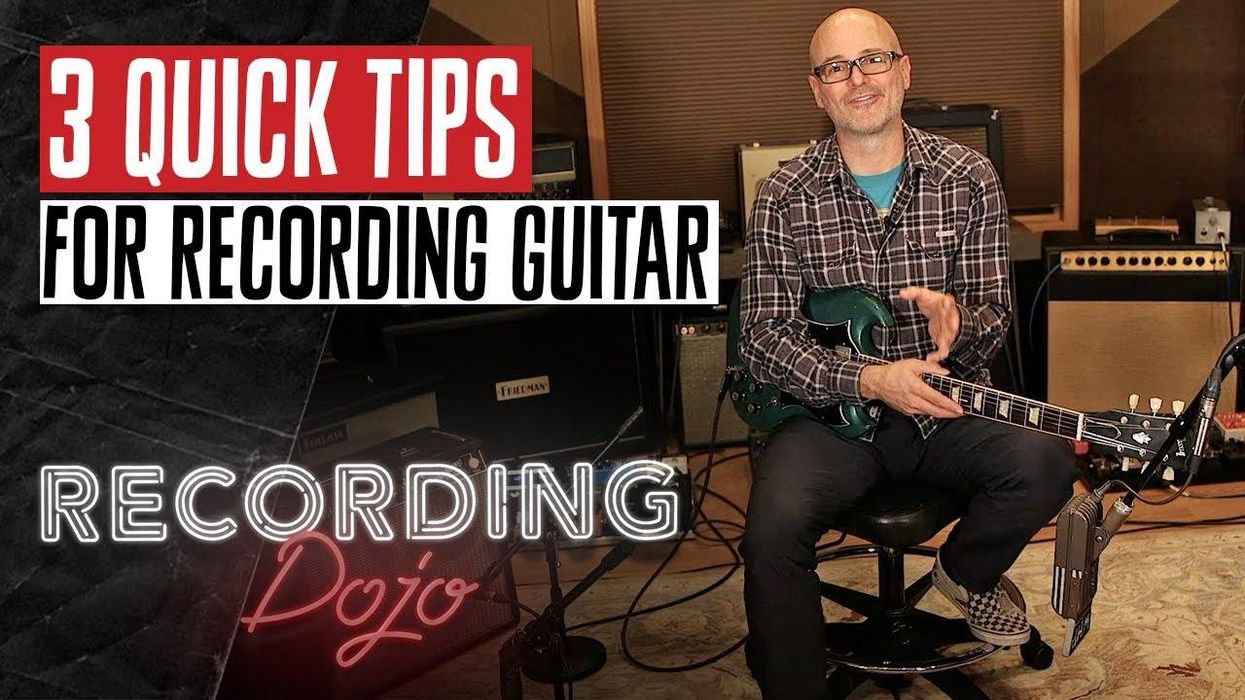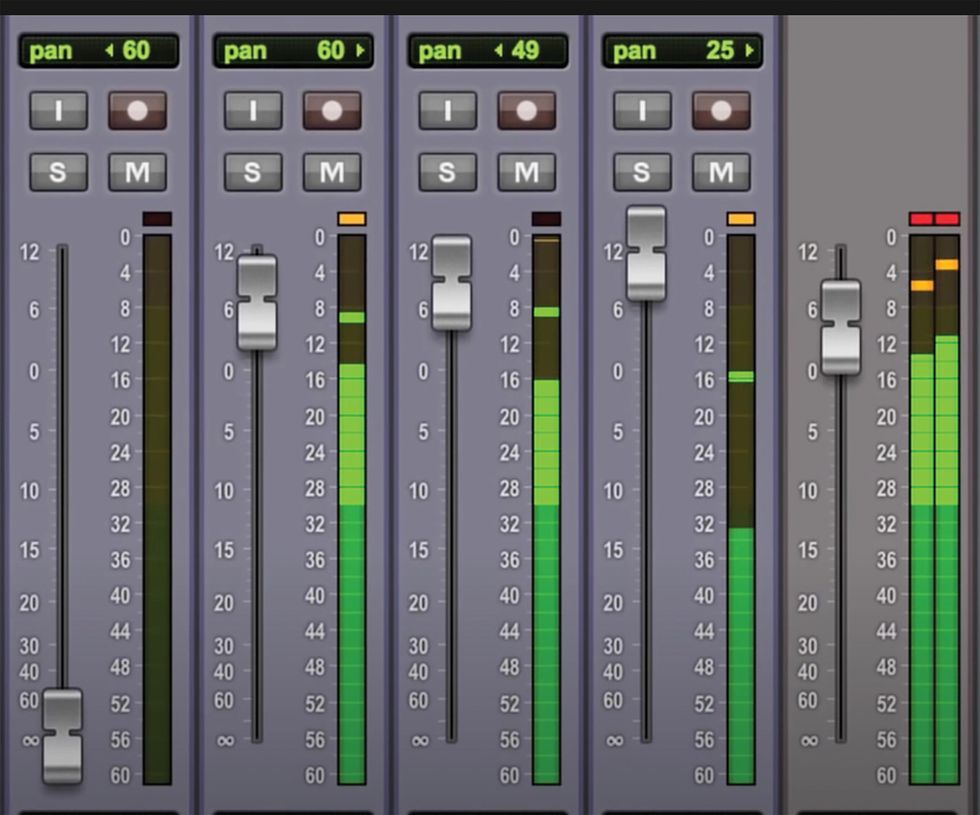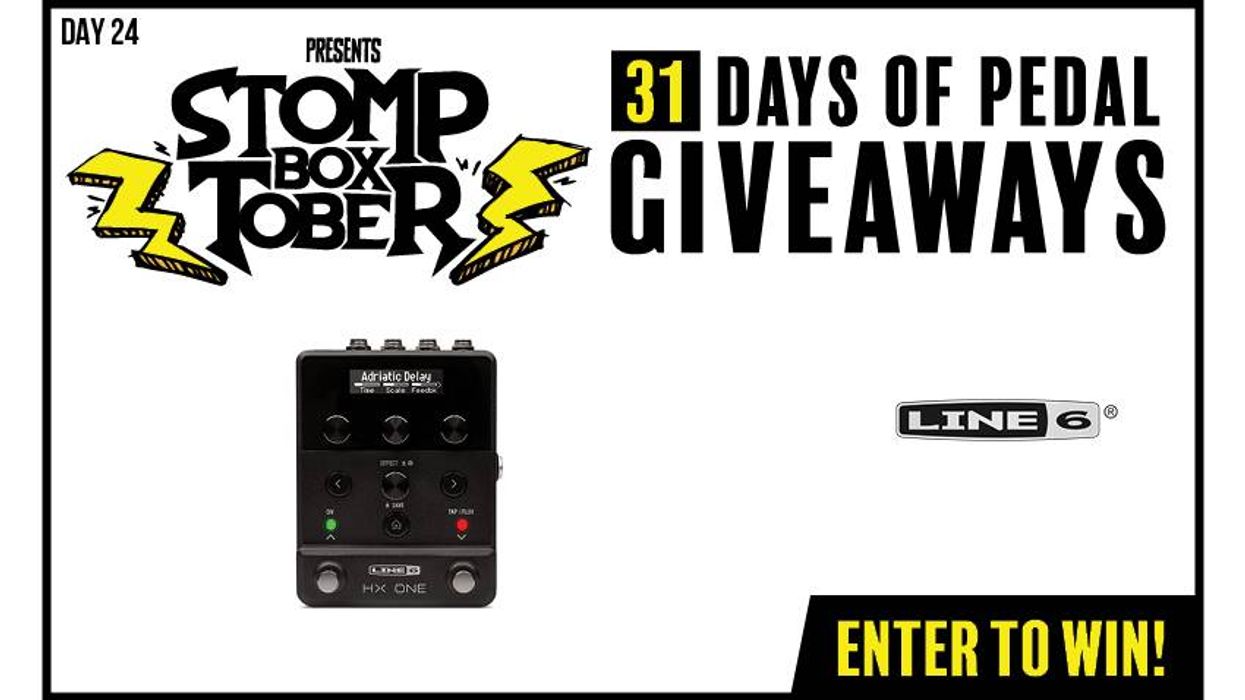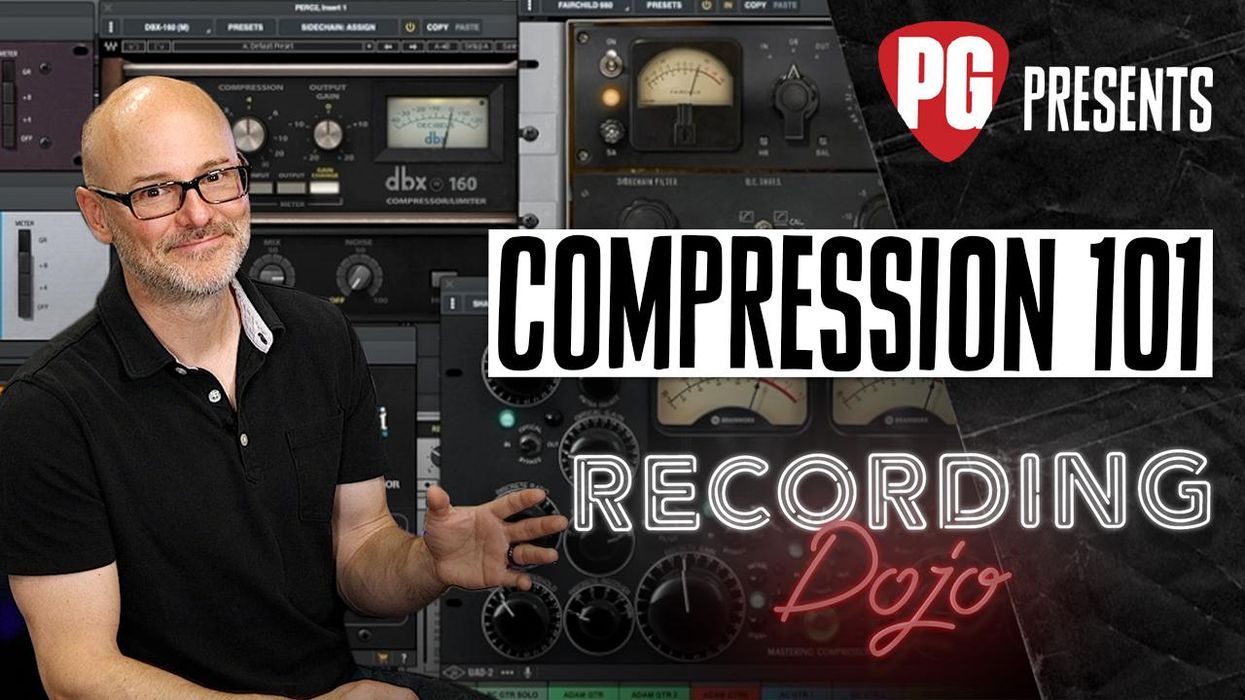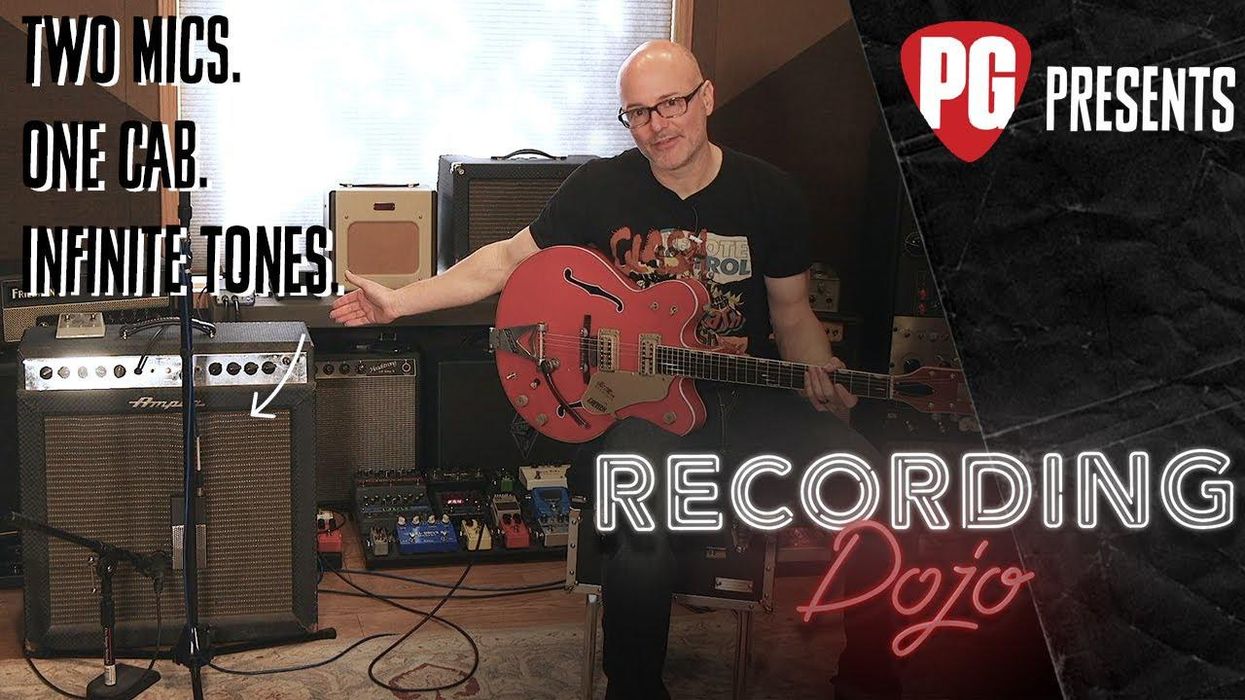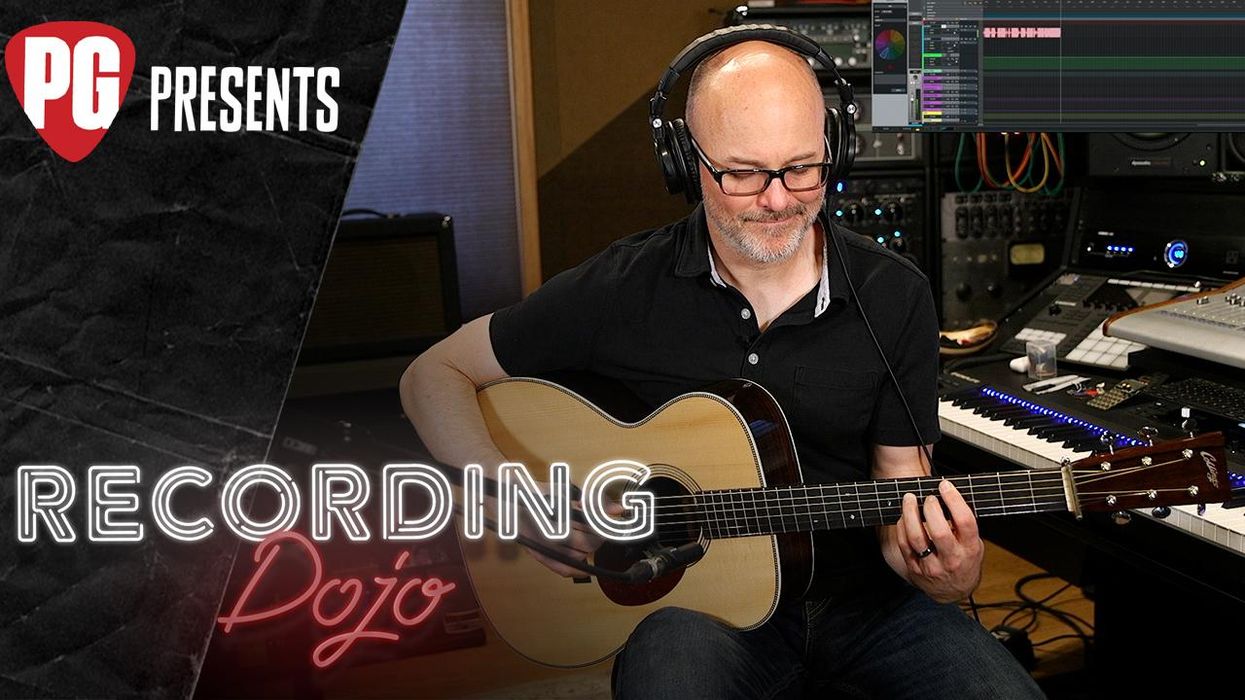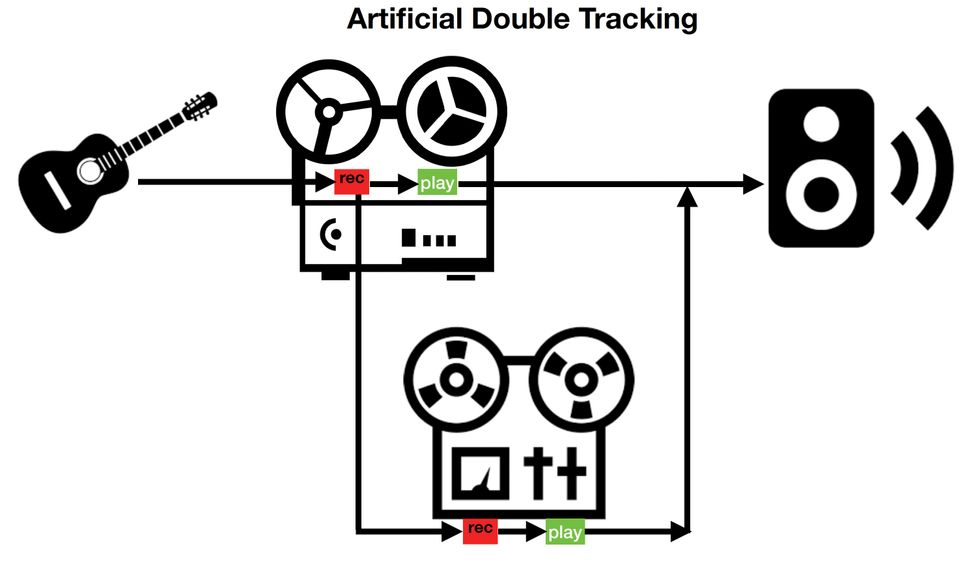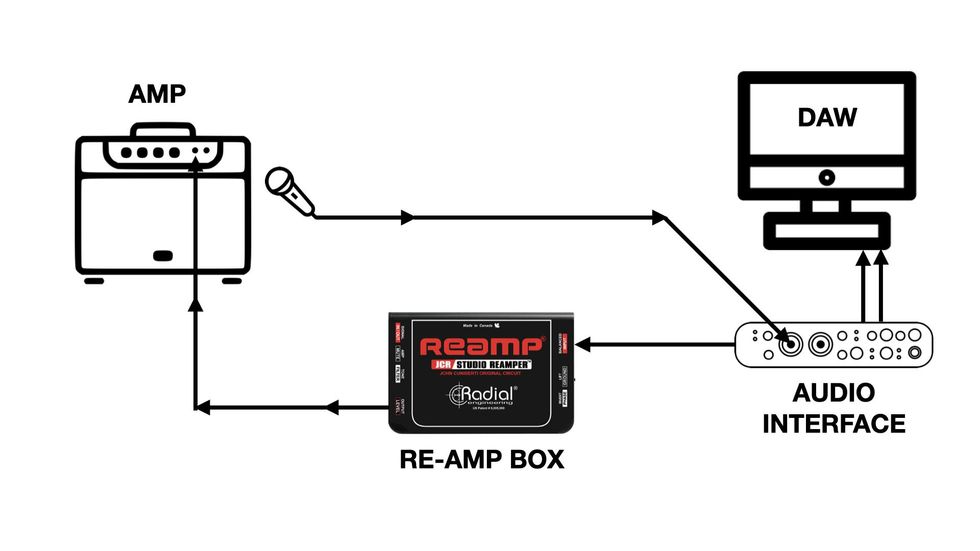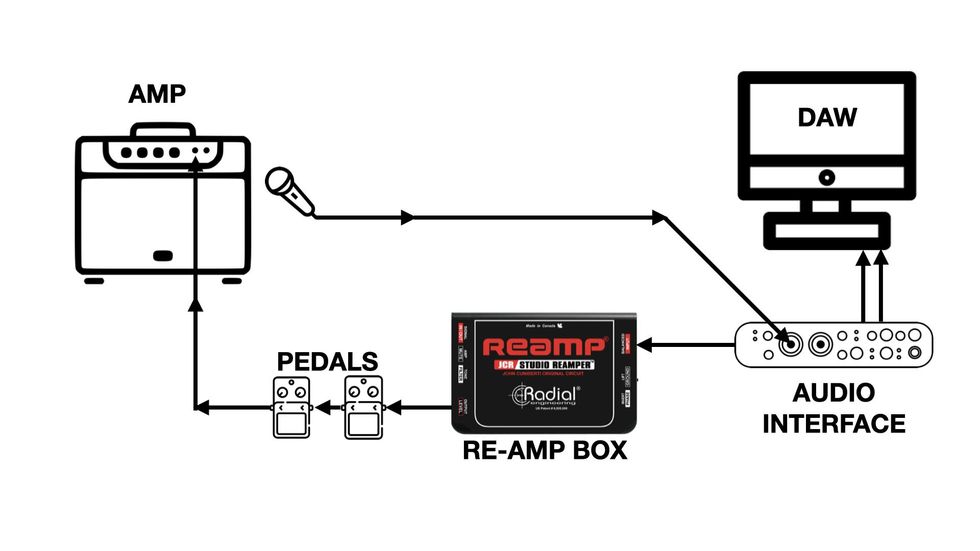Think about the inspiration we’ve all had from hearing an amazing electric guitar recording. I know it’s literally altered my career path, and I’m sure countless others will have similar stories. But getting that perfect sound from the speaker to tape is no easy task. There are infinite combinations of pickups, strings, amps, cables, instruments and players, each with their own tonality (and an endless number of opinions, too!). However, right up there in the order of importance is certainly the choice of microphone. Each selection will add a little something different to the sound, and no one choice is always the right one.
The Mics
 | 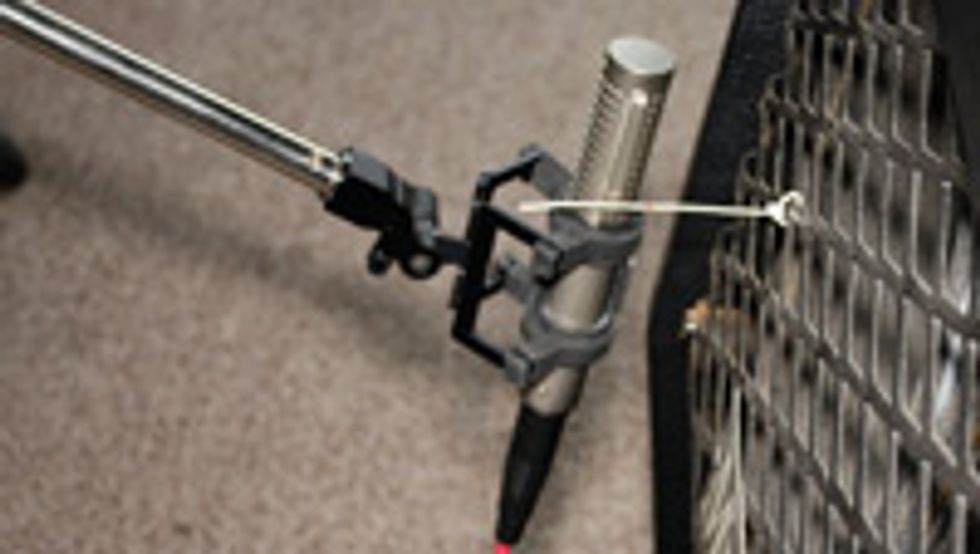 | 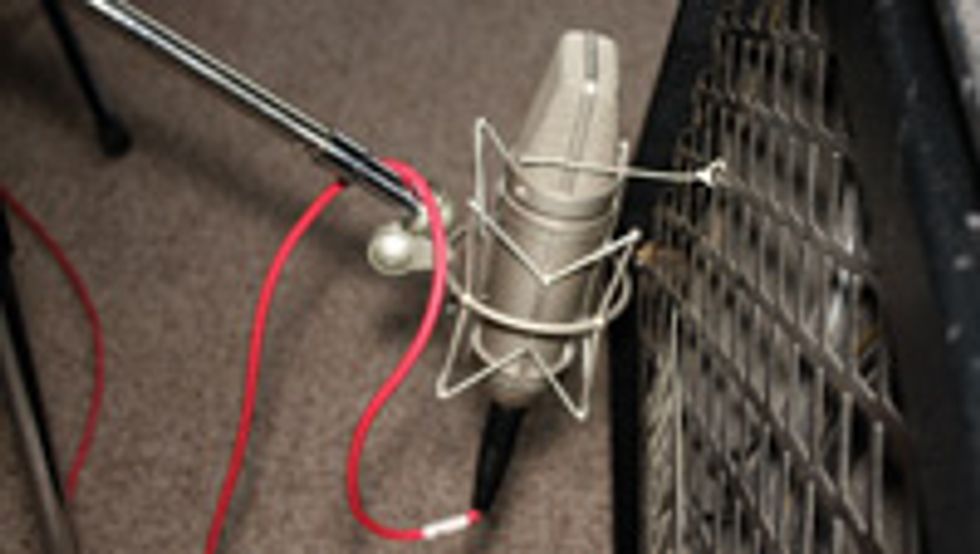 |
| Shure SM57 List: $170 Certainly a classic, this reliable, rugged dynamic mic has a frequency response of 40Hz–15kHz. Its relatively tight cardioid polar pattern and ability to take high volumes make it a first-call on many sessions. Due to its aggressive mid-range growl, it’s a perfect companion to blend with “darker” mics. When it comes to bang for the buck, the SM57 is hard to beat. Download Audio | Royer R-121 List: $1395 The R-121 is a dynamic Ribbon mic with a Figure-8 polar pattern. Like other ribbons, it’s warm, creamy and natural. Unlike most other ribbons, it was built to take a max SPL rating of 135dB, making it a great cabinet mic. Also, by turning it around and reversing the phase, the back is sonically brighter at distances of two feet and closer. We found its face-front sound to be one of our favorites overall for warmth and character—a perfect blend with an SM57. Download Audio | Neumann U 87 (Ai) List: $3998 Another legendary classic, this large diaphragm mic has three polar patterns (cardioid, omni, figure-8). We used an older model in cardioid mode, but the new Ai version has circuitry to increase the headroom by 10dB. With the rear switch attenuated, the U 87 can take up to 127dB and has a frequency response of 20Hz–20kHz. You can hear the “beef” on both clean and distorted parts, and very nice attitude on distorted sound. Download Audio |
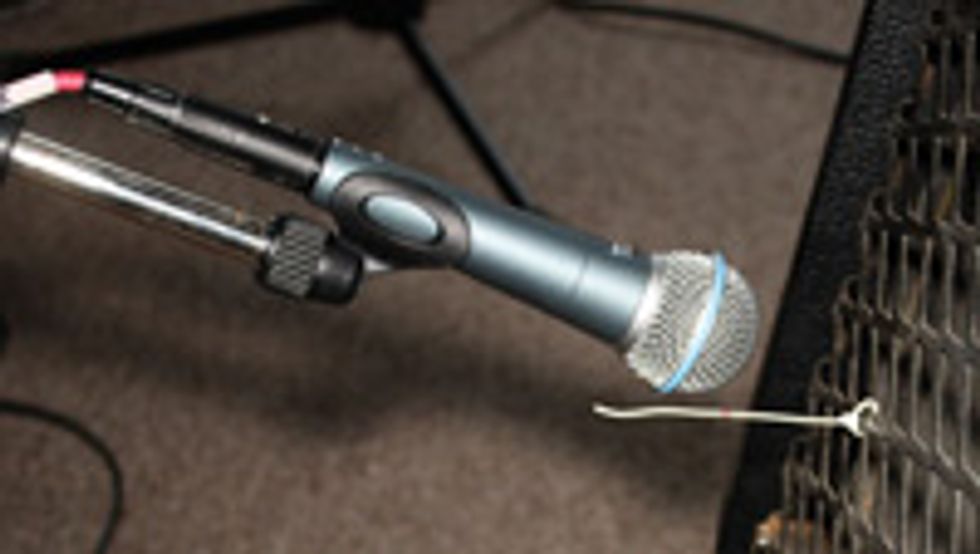 | 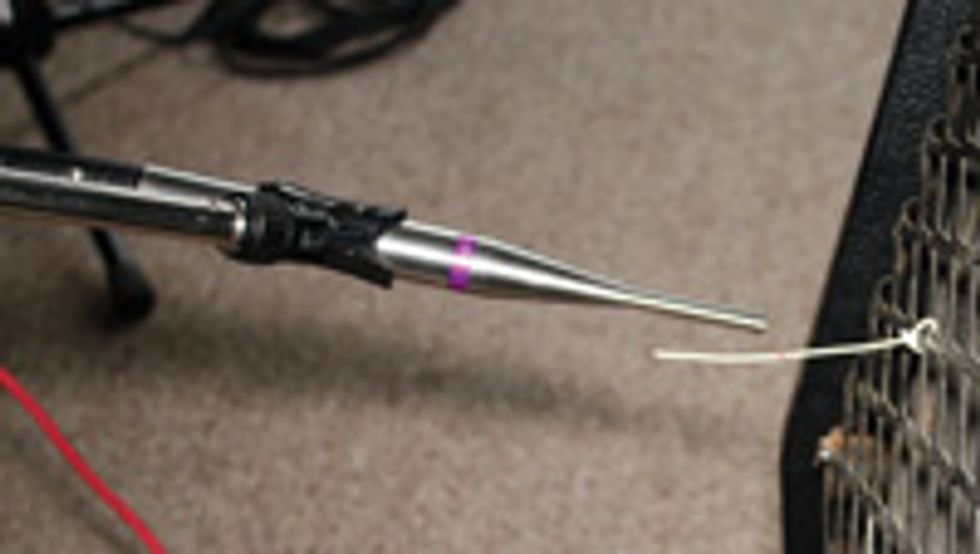 | 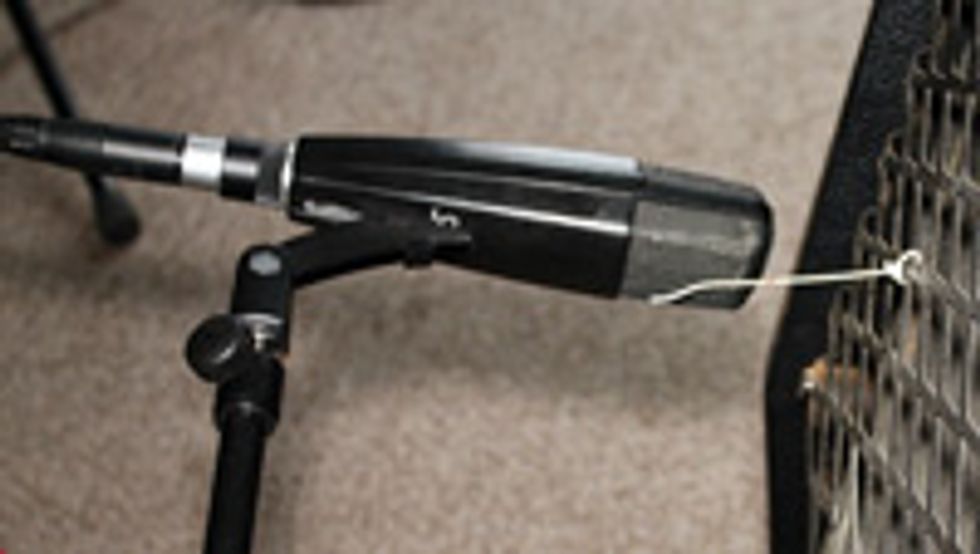 |
| Shure SM58 List: $188 Almost always thought of as a vocal mic, sometimes you just have to put one up on a cabinet. Like the SM57, its price, midrange peak, 50Hz–15kHz frequency response and ability to handle massive gain make it a mic drawer classic. Essentially a 57 with a different grill and more girth, it sounded surprisingly good on the clean parts. Download Audio | Earthworks QTC1 (Same as QTC40) List: $1295 An omni? Sure, why not! The QTC’s small diaphragm gives it a realistic and accurate sound. A super-wide frequency range of 4Hz–40kHz and max acoustic input of 142dB SPL make it a great option. It had a very natural sound—what you heard in the room is what came out of the speakers. Download Audio | Sennheiser MD 421 List: $598 A cardioid mic with a five-position bass rolloff (to help eliminate proximity effect), this mic is a classic tone heard for decades now. Its frequency response of 30Hz–17kHz and ability to take very high SPLs give it a full, round sound. It works great with other mics, and by itself sounded warm and full, with slightly rolled off highs. Download Audio |
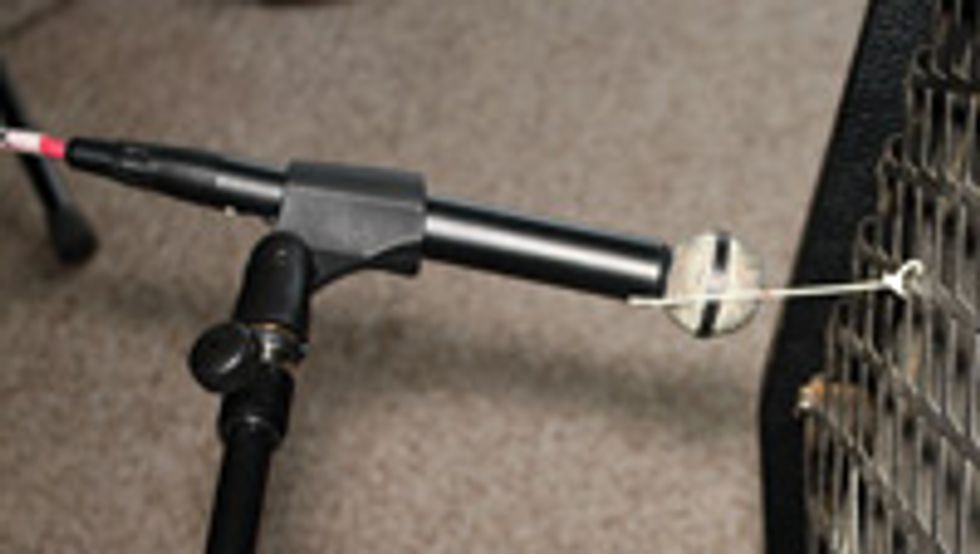 | 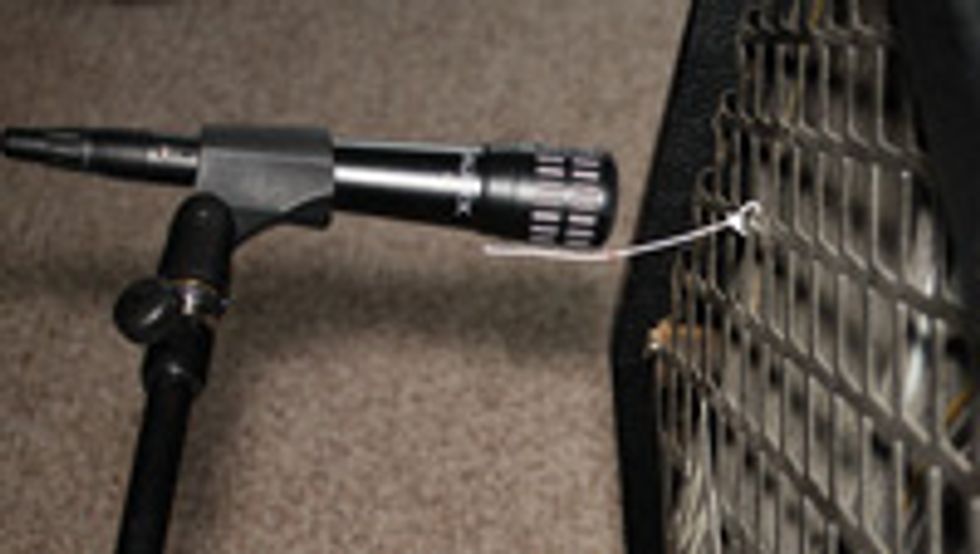 | 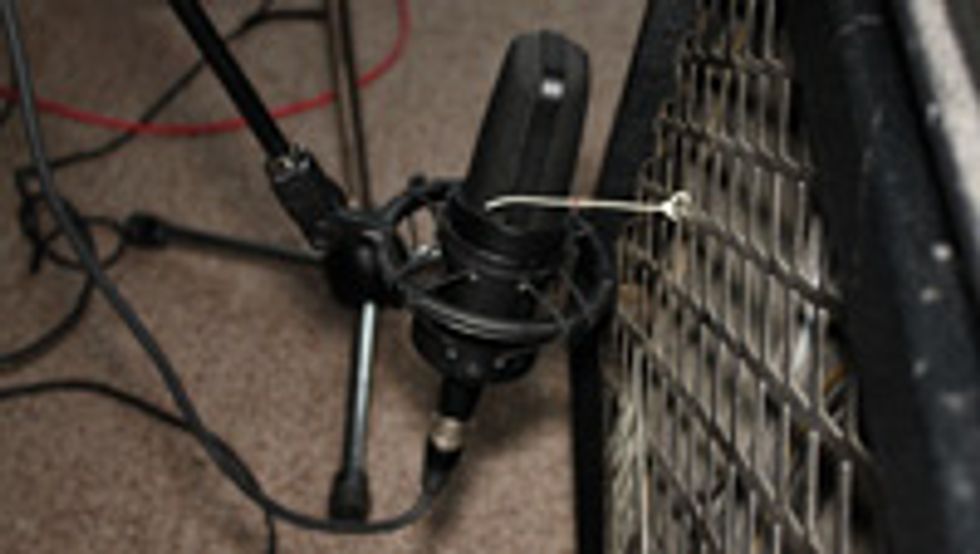 |
| Beyerdynamic M 160 List: $799 The M 160 is a hypercardioid, dynamic ribbon mic that has two ribbons arranged one above the other a half-millimeter apart. It’s got a max SPL of 129dB and a frequency response of 40Hz–18 kHz. Its big, ribbony sound is always a favorite for good reason. Download Audio | Audix i5 List $179 The i5 is a dynamic, general-purpose mic with a cardioid polar pattern. It has a frequency response of 50Hz–16kHz and a max SPL of 140dB—so it can take it hard. It sounds like a 57, but with additional presence and upper mid clarity, and would make a great partner with a MD 421 or Royer. Download Audio | Audio-Technica AT4060 List: $1665 This is a large cardioid, vacuum tube condenser with a large, 2-micron-thick gold diaphragm and separate power supply. It features 20Hz–20kHz specs and can take up to 131dB SPL, which is a lot for a tube mic. While it may not be the best call by itself, it would make a nice mic to put back around 3–4 feet for some additional room sound. Download Audio |
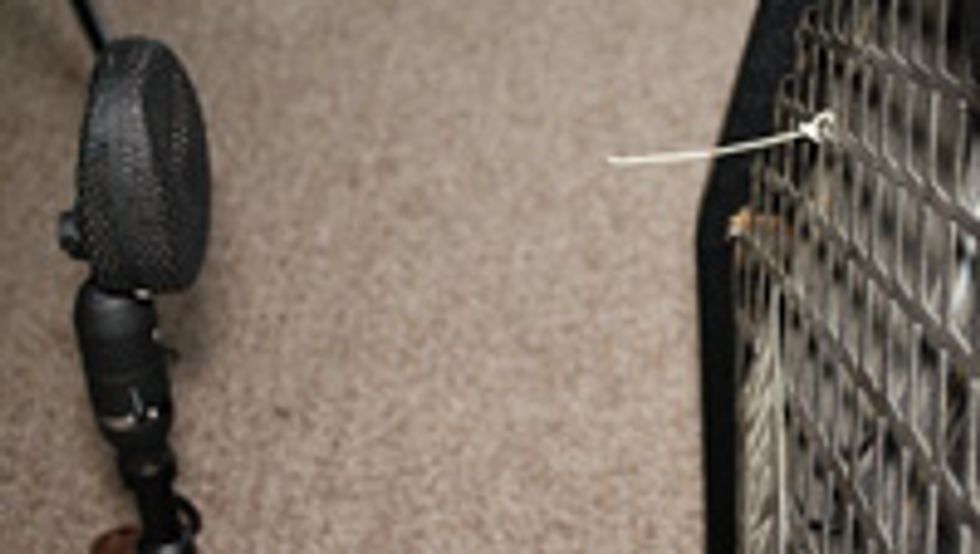 | 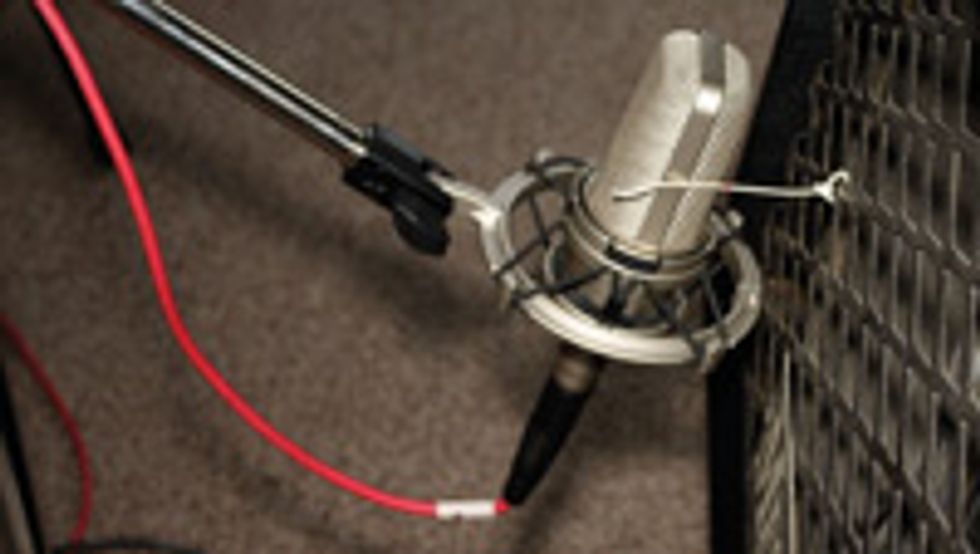 | 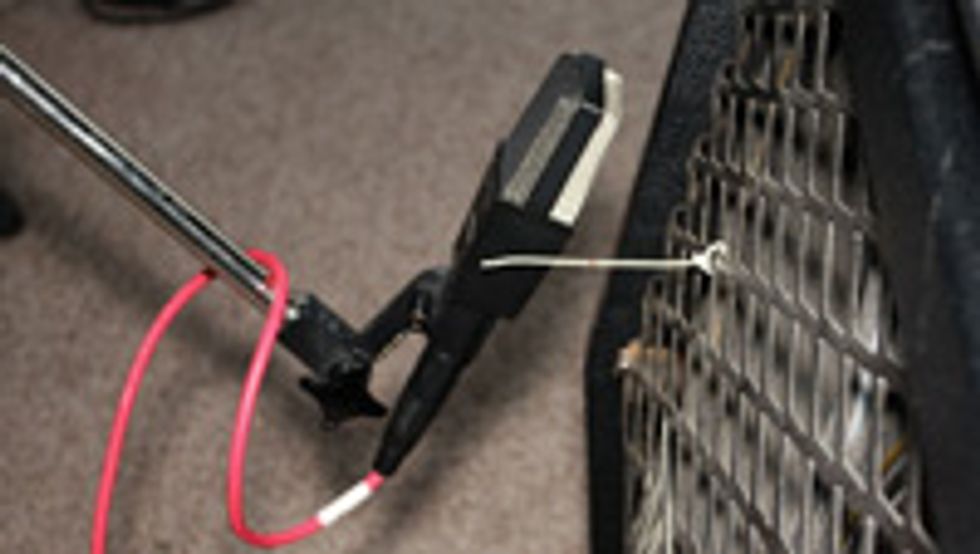 |
| Coles 4038 List: N/A The 4038 is a studio ribbon mic designed by the BBC for broadcasting and recording. It’s bidirectional (figure-8) with a frequency response of 30Hz–15kHz and can take up to 125dB SPL—although we had to move this back to 11 inches for breakup factor. Another classic ribbon sound with the softened highs and warm overall tone, there’s no denying this one. Download Audio | Audio-Technica AT4047/SV List: $745 This good-looking condenser mic has a wide frequency response of 20Hz–18kHz and the ability to take up to 159dB SPL with the 10dB pad in. There’s a switchable 80Hz hi-pass filter as well, and it features a gold plated dualdiaphragm capsule design. It captured both crisp highs and a well-rounded bottom. Download Audio | AKG 414 B-ULS List: $1349 Wow, another classic. The 414 has five switchable polar patterns (omni, wide cardioid, cardioid, hyper cardioid, figure-8) and a large, 1-inch diaphragm. It’s got 20Hz–20kHz frequency response and a max SPL of up to 158 with -18dB of attenuation switched in. We set it to cardioid, no pad. This mic cuts through a mix well and has lots of attitude. Download Audio |
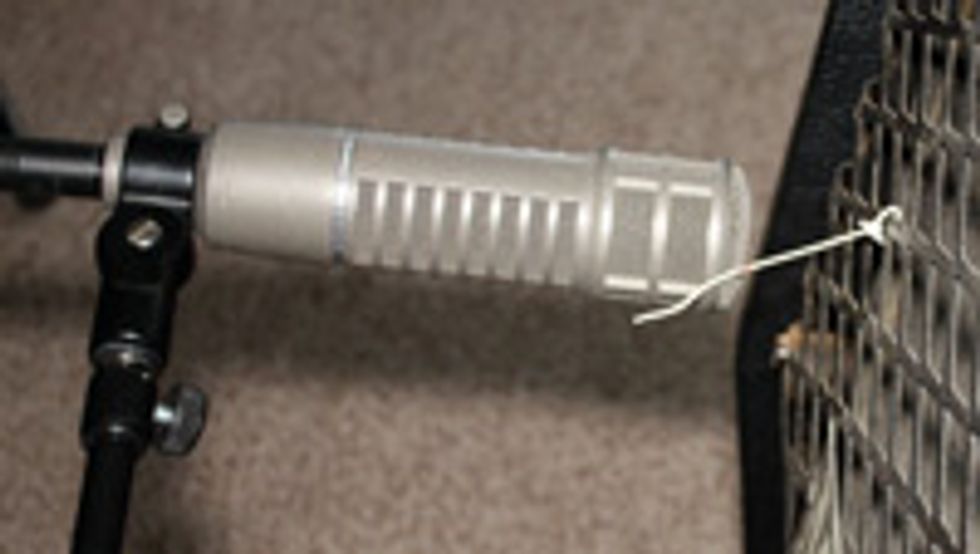 | 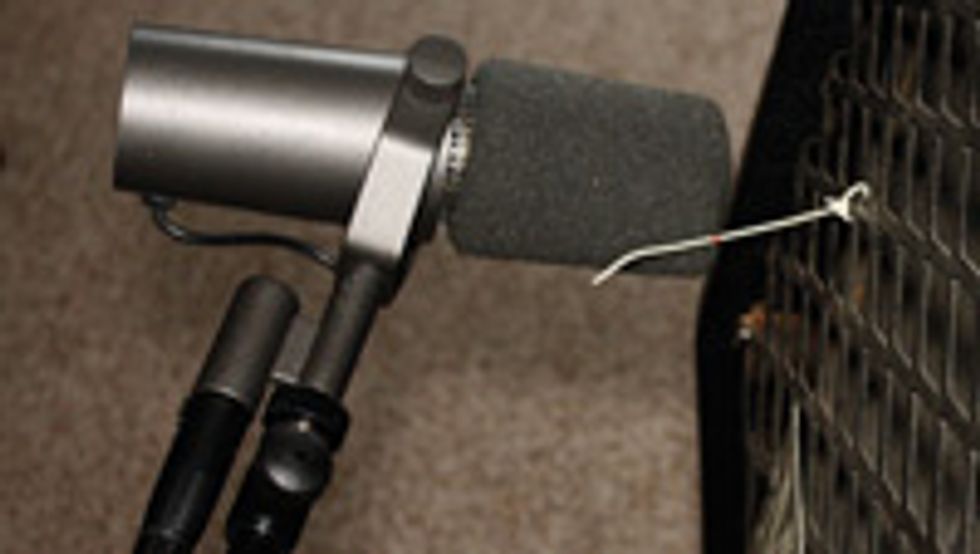 | 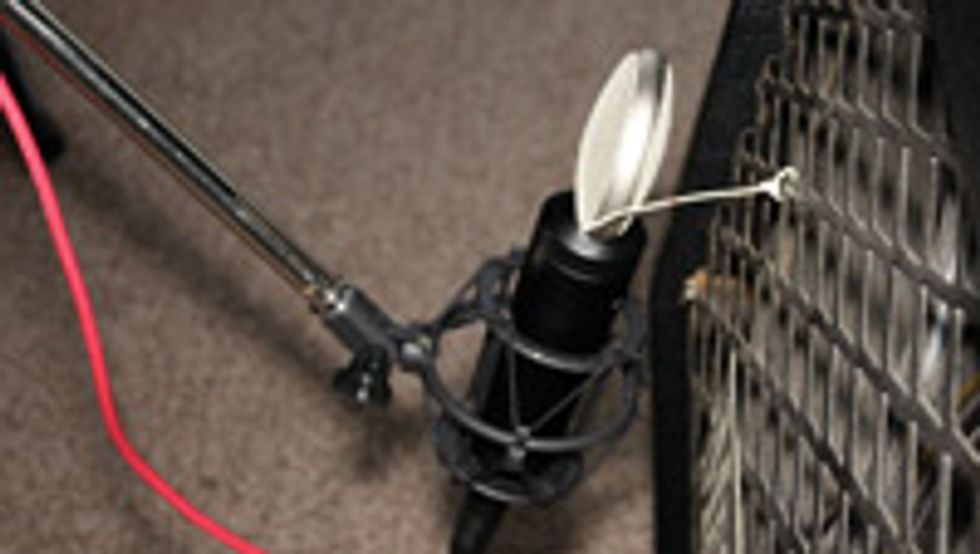 |
| EV RE20 List: $750 Often referred to as the “donkey dick” mic, this large diaphragm dynamic cardioid monster routinely seen and heard on radio/TV broadcasts has a frequency response of 45Hz–18kHz. Commonly used in guitar session work, it makes a great complement to other mics, such as the 57. We used a PL15, which is basically the same model. It’s got great low end in both the clean and distorted parts… smooth upper mids and not too much high end. Download Audio | Shure SM7B List: $619 This dynamic is often viewed as a radio mic, but it has a smooth sound and 50Hz–20kHz frequency response. There are bass roll-off and mid-range emphasis switches, but we set it flat. With an immediately pleasing sound both clean and distorted, it’s got a bottom-heavy focus that works great alone or in conjunction with a brighter mic—great attitude. Download Audio | M-Audio Luna List: $399 Now available as the Luna II, this cardioid condenser has a large, solid brass capsule, Class-A electronics and a 10dB pad, which lets it handle up to 140dB SPL. It has a good, full low end and smooth mids, especially on the distorted tracks, and is well balanced. Download Audio |
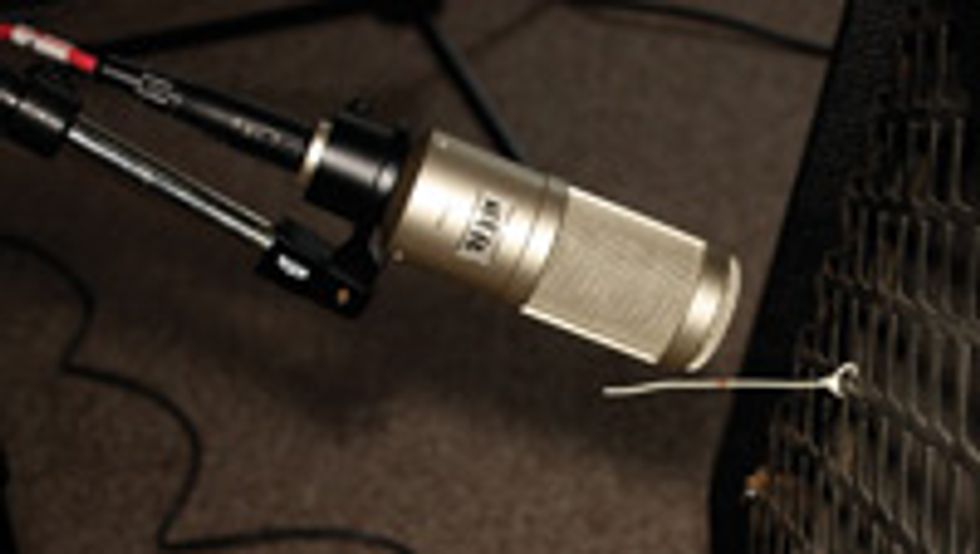 | 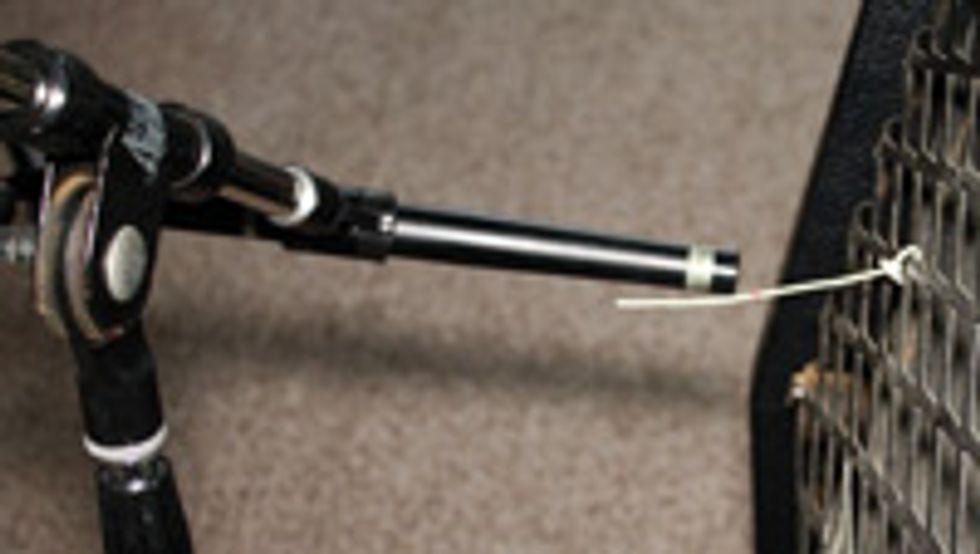 | 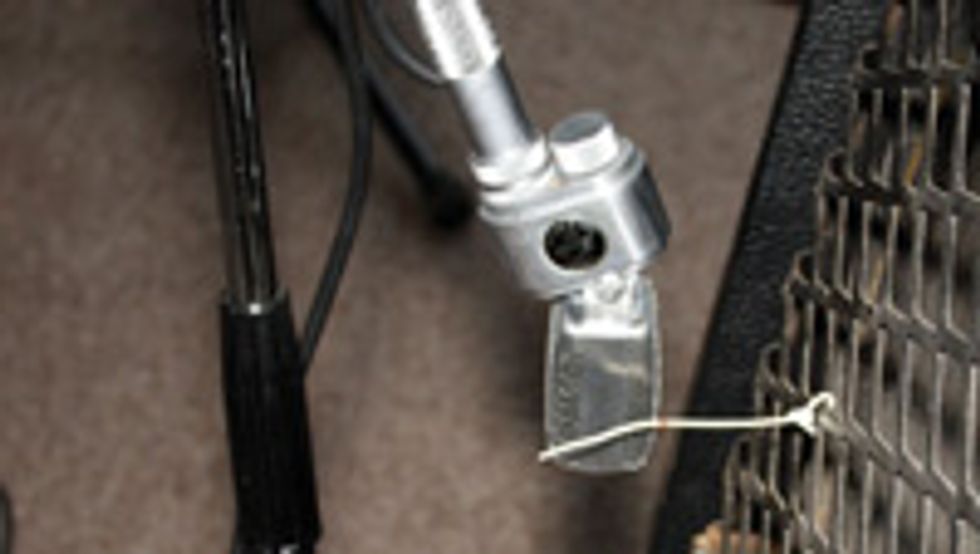 |
| Heil PR 40 List: $375 A dynamic supercardioid mic from Heil Sound, it features a large low-mass aluminum diaphragm, a heavy steel case and a wide frequency response from 28Hz–18kHz. Very nice bottom and high end, almost nondescript in a positive way. It sounds really cool with a Coles 4038, or the like. Download Audio | B&K 4006 List: $1925 (as DPA 4006) Now labeled under the DPA name, this high-end, phantom-powered omni mic is often used in classical recordings. Its got an extremely linear frequency response from 20Hz–20kHz, and can take up to 143dB max SPL. It sounds quite natural, with non-extended highs and lows that give you back just what you put in front of it. Download Audio | Reslo List: N/A A classic English ribbon mic from the early sixties, it’s got a frequency response of 40Hz–15kHz… no wonder it can be heard on some of those classic Beatles recordings. The output sounds like analog tape through an old tube console. Download Audio |
Below, Grammy Award Winning engineer/producer Pete Moshay and I put a nice selection of mics up on an electric guitar session, all ranging in street price from $99 to over $4000. From the desert island Shure SM57 to a vintage Coles 4038 ribbon, there’s something for everyone.
The Method
I recorded two guitar licks directly into Pro Tools HD at 24-bit, 48kHz using a Creation Audio Labs MW1 and a stock early-nineties American Standard Telecaster, set to the middle pickup position. We then fed that output into a Mesa Boogie MKIV (Full power, Triode and Simul-Class settings) head and a Boogie 4x12 cabinet with Black Shadow speakers in Moshay’s A-frame live room (plugged into a balanced power source).
Using our ears to pick the best speaker, we then placed each mic directly on axis, about two inches from the grill, just to the left outside the center of the cone. We used a Little Labs IBP to run the signal from Pro Tools to the amp, bringing the +4dB line level signal to guitar level. Each lick was recorded first on the Boogie’s Channel 1 clean setting, then on Channel 3 with some tube saturation. We used a Focusrite ISA 828 on Medium impedance (which we felt imparted the least coloration on the varied mic impedances), running the signal directly into Pro Tools with the preamp’s A/D converters, all clocked with an Apogee Electronics Big Ben. No patch bay was used.
The only adjustments made were to maintain a consistent signal where the peaks hit around -3–4 dB, using a 1kHz tone sent into the amp at approximately -25dB. With all the various types, models and dynamic ranges of the mics, it’s not a perfect science to get exact measurements and levels, but we tried to keep everything as even as possible.
Shure SM57
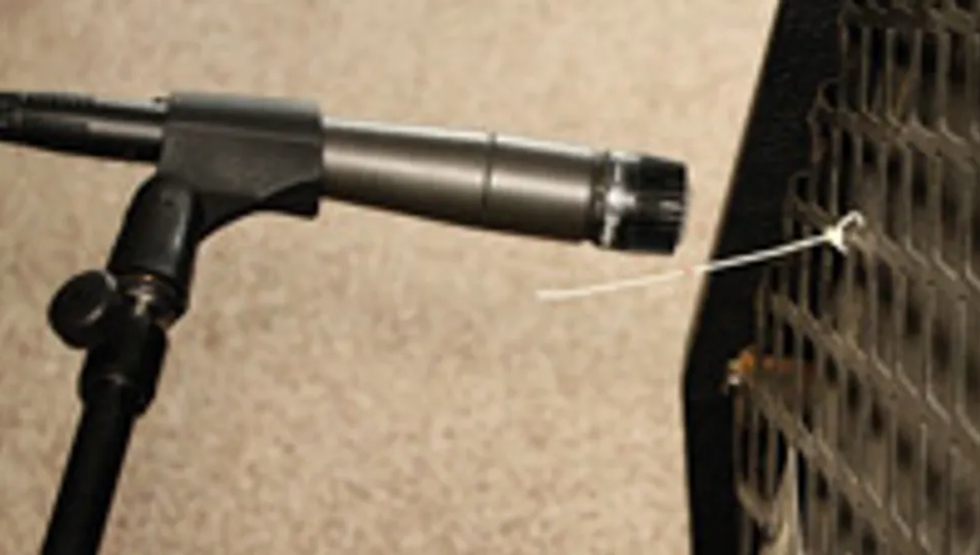
Certainly a classic, this reliable, rugged dynamic mic has a frequency response of 40Hz–15kHz. Its relatively tight cardioid polar pattern and ability to take high volumes make it a first-call on many sessions. Due to its aggressive mid-range growl, it’s a perfect companion to blend with “darker” mics. When it comes to bang for the buck, the SM57 is hard to beat.
$99 street
shure.com
Royer R-121
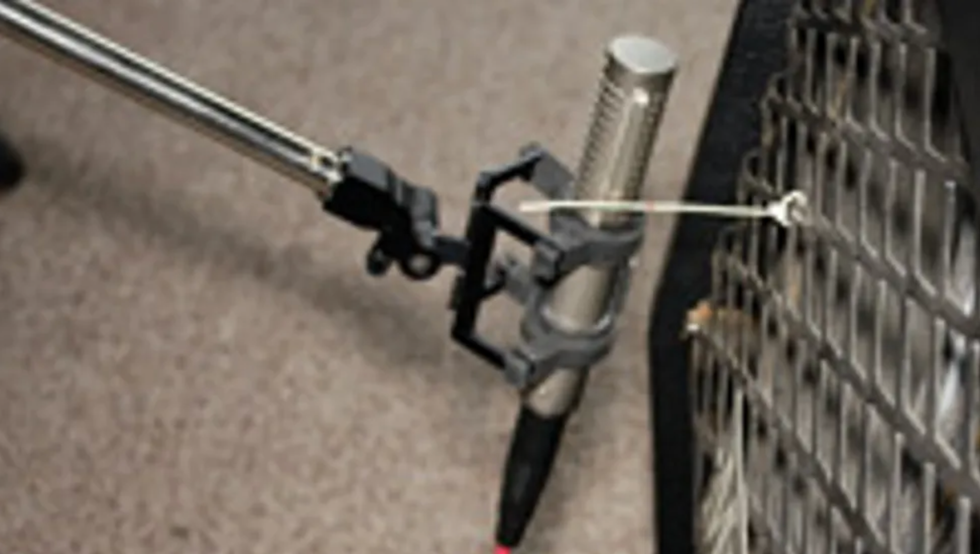
The R-121 is a dynamic Ribbon mic with a Figure-8 polar pattern. Like other ribbons, it’s warm, creamy and natural. Unlike most other ribbons, it was built to take a max SPL rating of 135dB, making it a great cabinet mic. Also, by turning it around and reversing the phase, the back is sonically brighter at distances of two feet and closer. We found its face-front sound to be one of our favorites overall for warmth and character—a perfect blend with an SM57.
$1,295 street
royerlabs.com
Neumann U 87 Ai
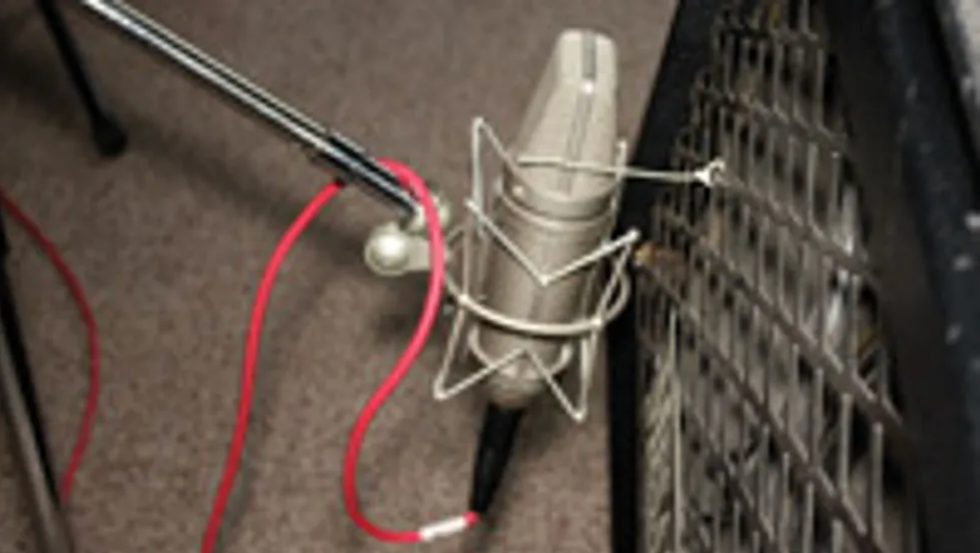
Another legendary classic, this large diaphragm mic has three polar patterns (cardioid, omni, figure-8). We used an older model in cardioid mode, but the new Ai version has circuitry to increase the headroom by 10dB. With the rear switch attenuated, the U 87 can take up to 127dB and has a frequency response of 20Hz–20kHz. You can hear the “beef” on both clean and distorted parts, and very nice attitude on distorted sound.
$3,650 street
en-de.neumann.com
Shure SM58
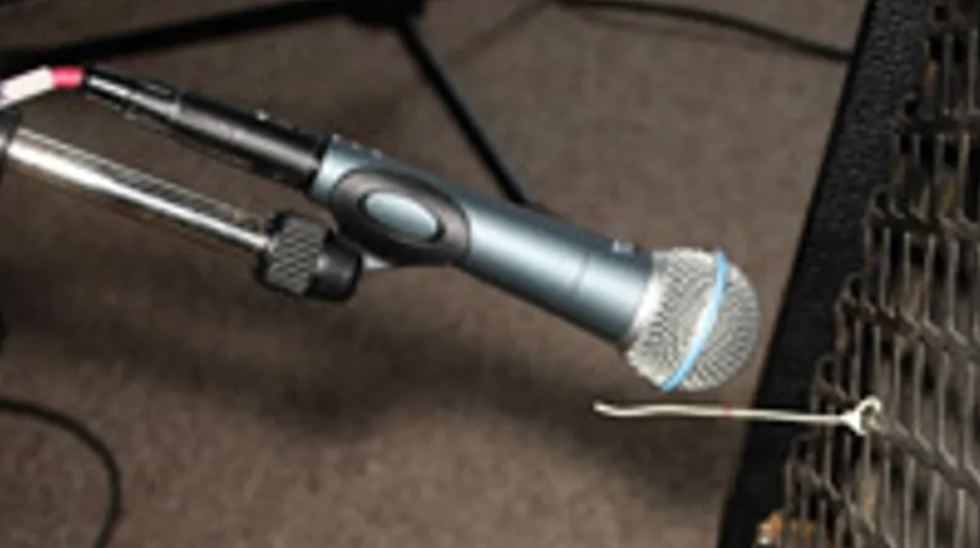
Almost always thought of as a vocal mic, sometimes you just have to put one up on a cabinet. Like the SM57, its price, midrange peak, 50Hz–15kHz frequency response and ability to handle massive gain make it a mic drawer classic. Essentially a 57 with a different grill and more girth, it sounded surprisingly good on the clean parts.
$99 street
shure.com
Earthworks QTC1
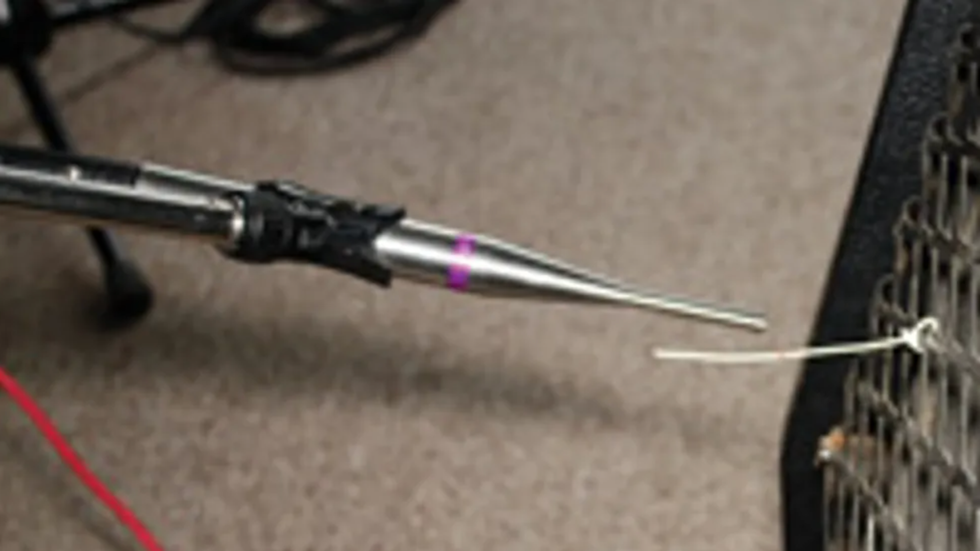
An omni? Sure, why not! The QTC’s small diaphragm gives it a realistic and accurate sound. A super-wide frequency range of 4Hz–40kHz and max acoustic input of 142dB SPL make it a great option. It had a very natural sound—what you heard in the room is what came out of the speakers.
$1,998 street
earthworksaudio.com
Sennheiser MD 421
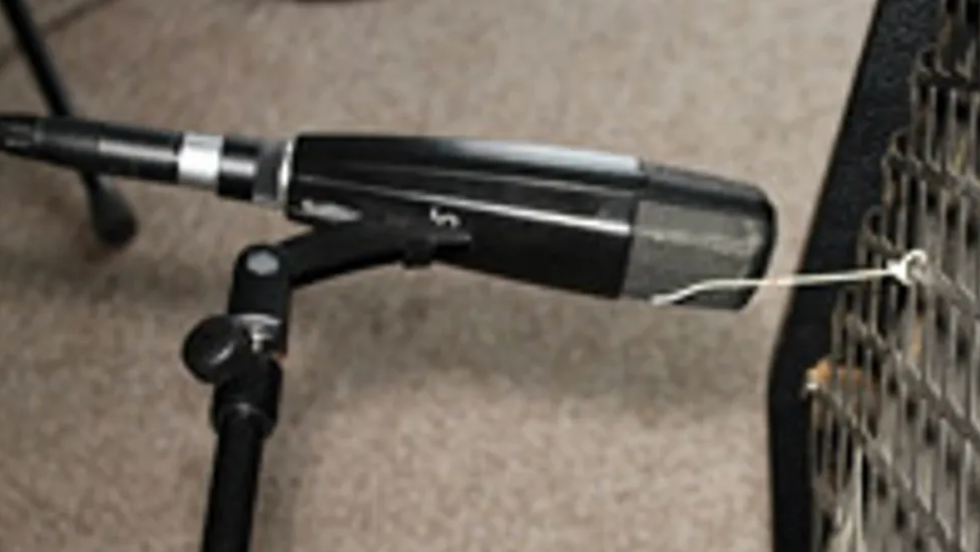
A cardioid mic with a five-position bass rolloff (to help eliminate proximity effect), this mic is a classic tone heard for decades now. Its frequency response of 30Hz–17kHz and ability to take very high SPLs give it a full, round sound. It works great with other mics, and by itself sounded warm and full, with slightly rolled off highs.
$399 street
en-us.sennheiser.com
Beyerdynamic M 160
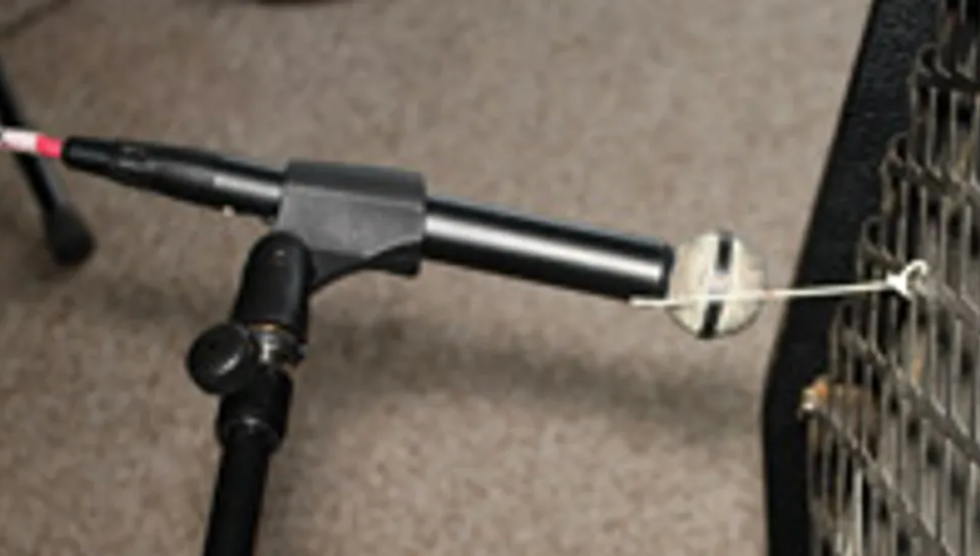
The M 160 is a hypercardioid, dynamic ribbon mic that has two ribbons arranged one above the other a half-millimeter apart. It’s got a max SPL of 129dB and a frequency response of 40Hz–18 kHz. Its big, ribbony sound is always a favorite for good reason.
$699 street
north-america.beyerdynamic.com
Audix i5

The i5 is a dynamic, general-purpose mic with a cardioid polar pattern. It has a frequency response of 50Hz–16kHz and a max SPL of 140dB—so it can take it hard. It sounds like a 57, but with additional presence and upper mid clarity, and would make a great partner with a MD 421 or Royer.
$99 street
audixusa.com
Audio-Technica AT4060
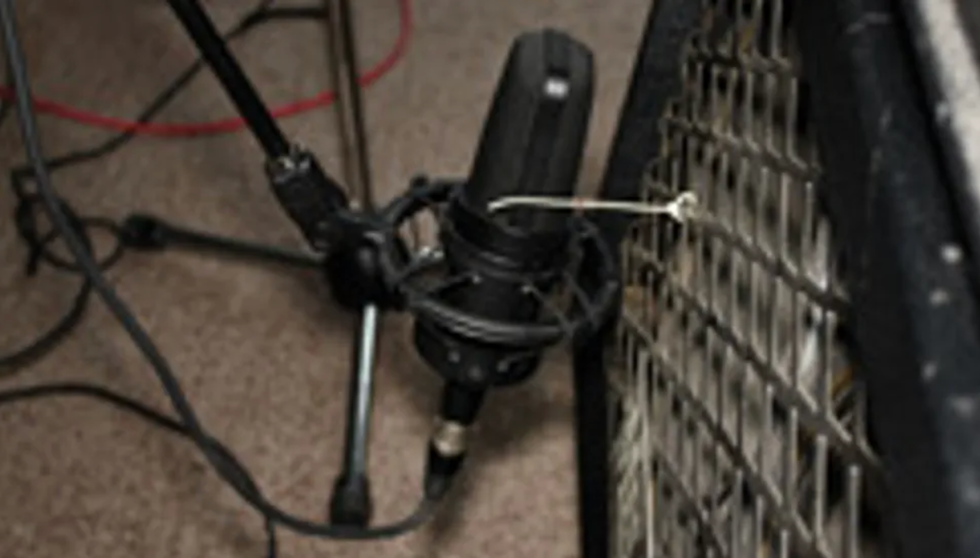
This is a large cardioid, vacuum tube condenser with a large, 2-micron-thick gold diaphragm and separate power supply. It features 20Hz–20kHz specs and can take up to 131dB SPL, which is a lot for a tube mic. While it may not be the best call by itself, it would make a nice mic to put back around 3–4 feet for some additional room sound.
$1,699 street
audio-technica.com
Coles 4038

The 4038 is a studio ribbon mic designed by the BBC for broadcasting and recording. It’s bidirectional (figure-8) with a frequency response of 30Hz–15kHz and can take up to 125dB SPL—although we had to move this back to 11 inches for breakup factor. Another classic ribbon sound with the softened highs and warm overall tone, there’s no denying this one.
$1,438 street
Audio-Technica AT4047/SV

This good-looking condenser mic has a wide frequency response of 20Hz–18kHz and the ability to take up to 159dB SPL with the 10dB pad in. There’s a switchable 80Hz hi-pass filter as well, and it features a gold plated dualdiaphragm capsule design. It captured both crisp highs and a well-rounded bottom.
$699 street
audio-technica.com
AKG C414
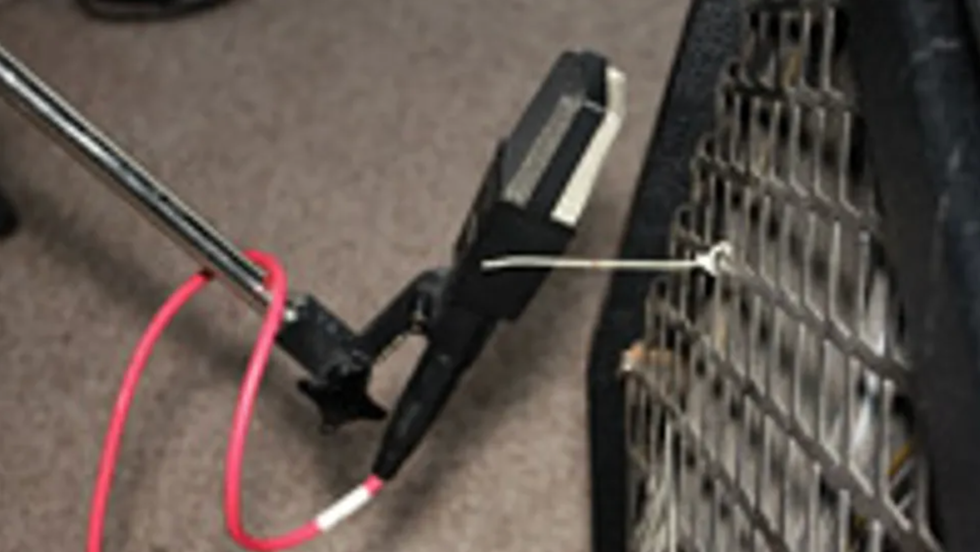
Wow, another classic. The 414 has five switchable polar patterns (omni, wide cardioid, cardioid, hyper cardioid, figure-8) and a large, 1-inch diaphragm. It’s got 20Hz–20kHz frequency response and a max SPL of up to 158 with -18dB of attenuation switched in. We set it to cardioid, no pad. This mic cuts through a mix well and has lots of attitude.
$1,155 street
akg.com
Electro-Voice RE20
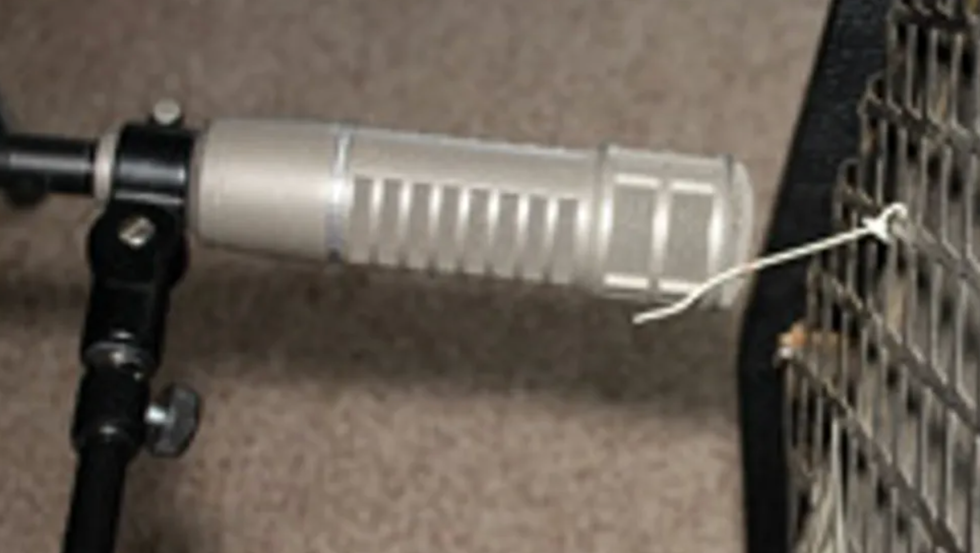
Often referred to as the “donkey dick” mic, this large diaphragm dynamic cardioid monster routinely seen and heard on radio/TV broadcasts has a frequency response of 45Hz–18kHz. Commonly used in guitar session work, it makes a great complement to other mics, such as the 57. We used a PL15, which is basically the same model. It’s got great low end in both the clean and distorted parts… smooth upper mids and not too much high end.
$449 street
electrovoice.com
Shure SM7B
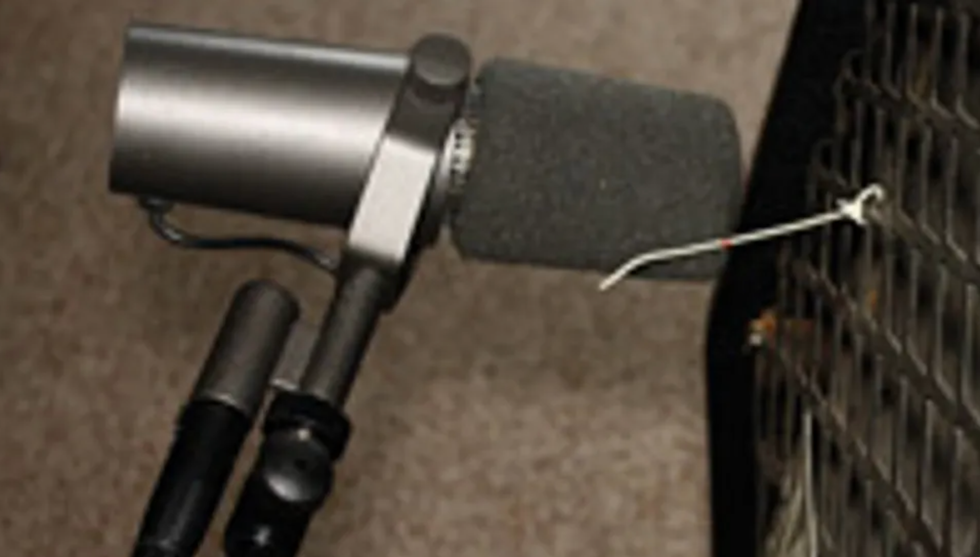
This dynamic is often viewed as a radio mic, but it has a smooth sound and 50Hz–20kHz frequency response. There are bass roll-off and mid-range emphasis switches, but we set it flat. With an immediately pleasing sound both clean and distorted, it’s got a bottom-heavy focus that works great alone or in conjunction with a brighter mic—great attitude.
$399 street
shure.com
M-Audio Luna
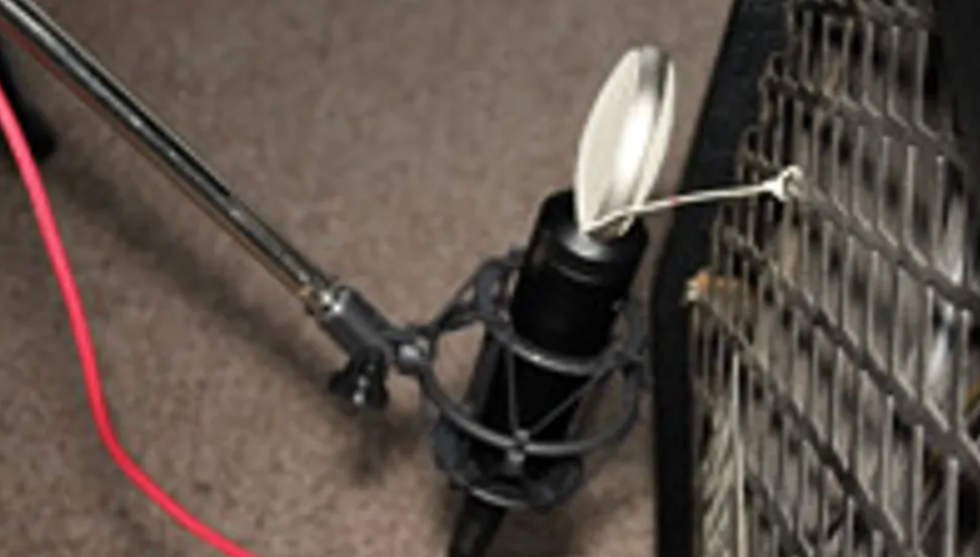
Now available as the Luna II, this cardioid condenser has a large, solid brass capsule, Class-A electronics and a 10dB pad, which lets it handle up to 140dB SPL. It has a good, full low end and smooth mids, especially on the distorted tracks, and is well balanced.
m-audio.com
Heil PR 40
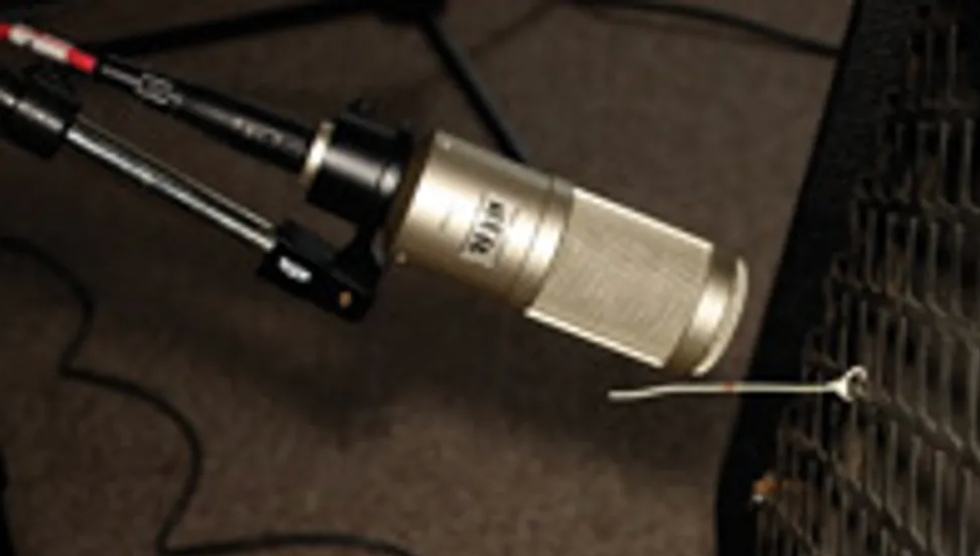
A dynamic supercardioid mic from Heil Sound, it features a large low-mass aluminum diaphragm, a heavy steel case and a wide frequency response from 28Hz–18kHz. Very nice bottom and high end, almost nondescript in a positive way. It sounds really cool with a Coles 4038, or the like.
$299 street
heilsound.com
DPA 4006
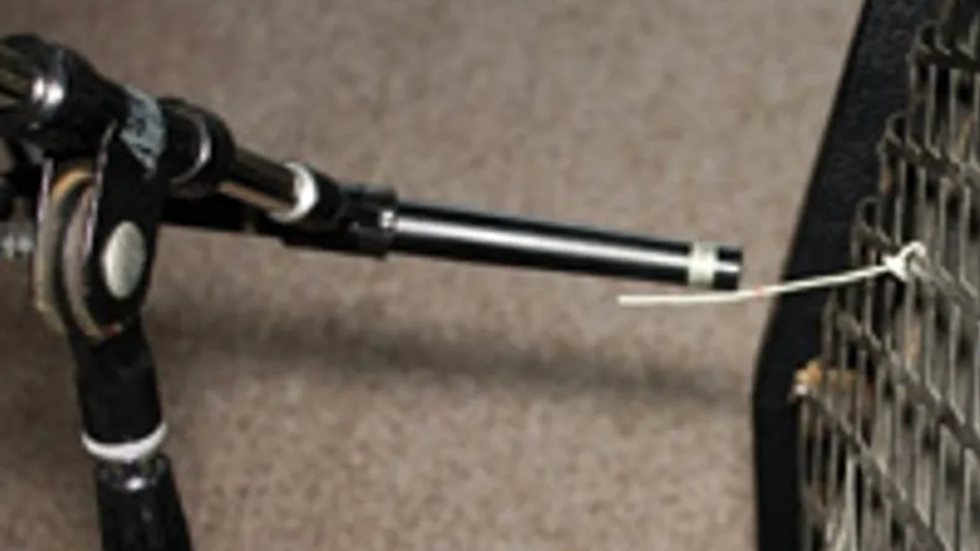
Now labeled under the DPA name, this high-end, phantom-powered omni mic is often used in classical recordings. Its got an extremely linear frequency response from 20Hz–20kHz, and can take up to 143dB max SPL. It sounds quite natural, with non-extended highs and lows that give you back just what you put in front of it.
$2,339 street
dpamicrophones.com
Reslo
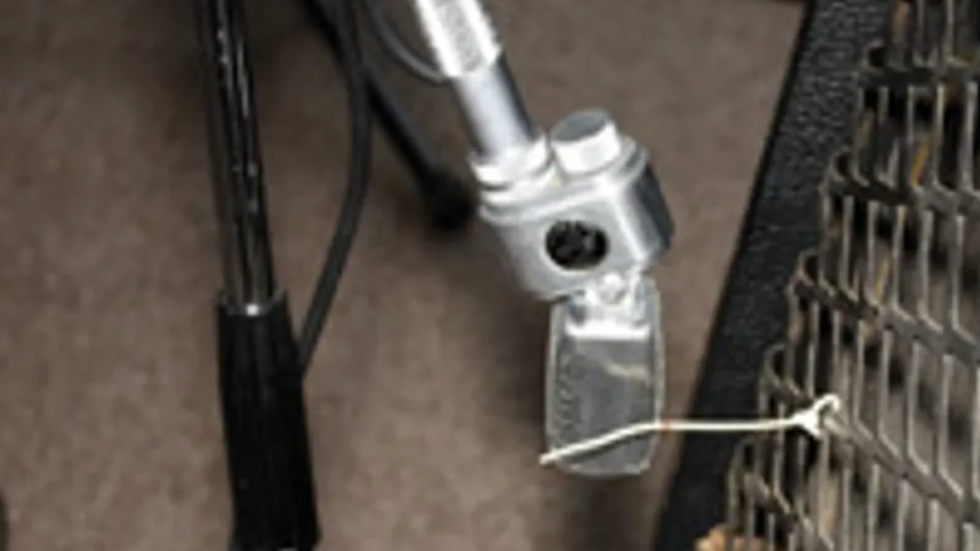
A classic English ribbon mic from the early sixties, it’s got a frequency response of 40Hz–15kHz… no wonder it can be heard on some of those classic Beatles recordings. The output sounds like analog tape through an old tube console.
[Updated 12/12/21]

